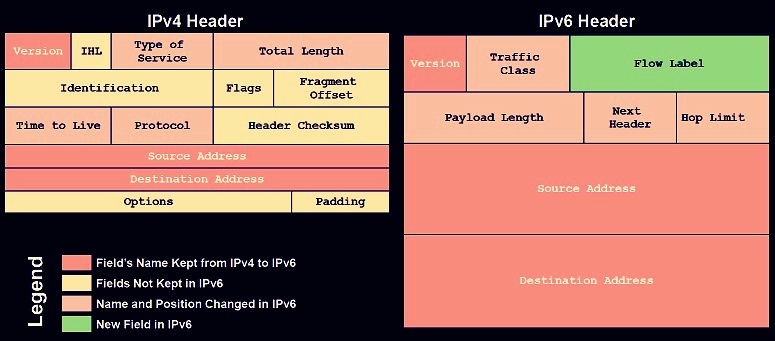Internet Protocol System
Internet protocols used to communicate packets of data across a network, and it is responsible for routing packets across network in these days. Any IP address is the way to communicate by identifying a host on a network using IP protocols.
Types of IP: It is basically two types one is IPv4, Which is most common and popular, and second one is IPv6 which is discovered to overcome of problems which found in IPv4.
IPv4:
- Have 32 bit addresses which is approximately 4 billion unique addresses.
- Causes most traffic.
- Easy ISP switching, network control, and inherent firewall.
- But the negative part is IP security complications, performance overhead and increase complexity.
- And address issue.
And this problem is overcome by IPv6:
- Have 128 bit which is approx. 3.4×10̂128 trillion -trillion times greater than 32bit addressing system.
- It shows autoconfiguration which means DHCP is not using at all.
- In this system mobility and security is mandatory, which means it is more secure than IPv4.
- Its having high routing efficiency, performance and forwarding rate.
- No broadcast and no checksum.
- It have high transition rate.

Internet Protocol System documentation is also presented here with example screen shot and explanation for all students from schools and colleges. Our expert team is always available 24/7 live to provide help within time for everyone at a minimum cost. All services at the assignmenthelp.net are open to all at minimum cost.
Subnet Mask:
It is basically define and addressing IP address, which is made up of two different parts.
- Network Portion: Define network address.
- Host Portion: Defines host on the separate network.
And subnet mask is 32 bit numbers, which tells the router, which bits of the network addresses and which for host portion.
DNS Server:
Domain name system, server service which maps name to an IP address. It is used on TCP/IP networks like Internet to locate computer and services with user friendly.It supports special zone called global name zone to hold single-lable host name.


